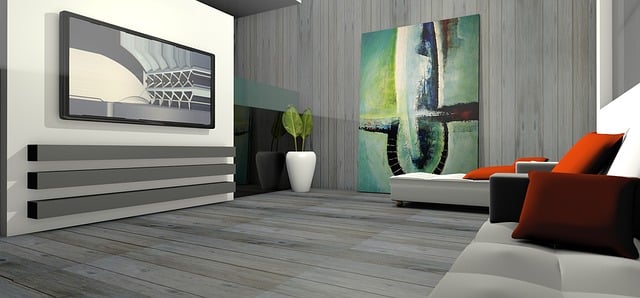CAD-based architectural visualization transforms client experiences in architecture, enabling architects to create immersive 3D digital prototypes. This technology allows clients to virtually explore structures, modify designs in real-time, and provide immediate feedback, fostering collaboration and enhancing communication. By utilizing advanced graphics engines and powerful computing resources, CAD-based tools streamline design processes, reduce revision cycles, and increase client satisfaction through a clear understanding of the final product, setting the stage for more successful project outcomes.
Real-time 3D visualization is transforming client experiences in architecture, engineering, and design. This cutting-edge technology offers immersive, interactive environments built upon CAD-based architectural visualization, fostering better understanding and engagement from clients. From enhancing design presentations to streamlining feedback loops, real-time 3D visualization empowers professionals to deliver more compelling projects. This article explores the power of CAD-based architectural visualization, its benefits for client experiences, implementation strategies, and the future of design presentations.
The Power of CAD-Based Architectural Visualization
The field of CAD-based architectural visualization has transformed how we perceive and interact with design concepts, ushering in a new era of immersive client experiences. By leveraging 3D modeling software, architects and designers can bring their visions to life, creating detailed digital prototypes that offer a comprehensive view of proposed structures. This technology enables clients to walk virtually through buildings, observe intricate details, and make informed decisions before construction even begins.
Such visualization goes beyond simple rendering; it allows for dynamic exploration and interaction. Clients can adjust lighting, experiment with different materials, and modify designs in real-time, fostering a collaborative environment that enhances communication between stakeholders. This level of immersion not only accelerates the design process but also ensures client satisfaction by providing a clear understanding of the final product.
Benefits for Client Experiences
Real-time 3D visualization offers a plethora of benefits for enhancing client experiences in various industries, particularly within architectural and design sectors. By employing CAD-based architectural visualization techniques, professionals can create immersive environments that allow clients to interact and explore designs as if they were real. This level of engagement facilitates better comprehension and appreciation of the proposed concepts, fostering more meaningful interactions between designers and their audience.
The technology enables dynamic manipulation of 3D models in real time, showcasing different design iterations, material properties, and lighting conditions instantaneously. This interactivity not only saves time during the review process but also empowers clients to provide immediate feedback, ensuring that designs align with their expectations and requirements. As a result, real-time visualization streamlines collaboration, reduces revision cycles, and ultimately contributes to more successful project outcomes.
Implementation Strategies and Technologies
The implementation of real-time 3D visualization technologies is a game-changer in the field of client experiences, especially within architecture and design sectors. One prominent strategy involves leveraging CAD-based architectural visualization tools that enable designers to create dynamic, interactive models. These digital twins of physical structures allow clients to virtually walk through, or even fly over, a design before construction begins, providing an immersive experience that was once unimaginable.
Advanced graphics engines, coupled with powerful computing resources, make real-time rendering possible. This technology is not only limited to architectural visualization; it can be applied across various industries, from engineering and urban planning to gaming and entertainment. Developers utilize specialized software to create 3D models, incorporating intricate details and realistic lighting effects to ensure a believable virtual environment. This level of interactivity fosters client engagement, enabling them to offer valuable feedback at each stage of the design process.
Enhancing the Future of Design Presentations
The future of design presentations is looking increasingly immersive, thanks to real-time 3D visualization technologies. By leveraging tools like CAD-based architectural visualization, professionals can now showcase their creations in a whole new light, literally. This dynamic approach allows clients to experience spaces as if they were already built, enhancing understanding and sparking more engaging discussions.
Real-time rendering enables designers to present detailed, interactive models that accurately represent intended designs. This level of immersion not only makes presentations more compelling but also facilitates better decision-making by clients. They can navigate through virtual spaces, observe design nuances from various angles, and provide immediate feedback, fostering a collaborative environment that was previously impossible with traditional 2D renderings.
Real-time 3D visualization, powered by advancements in CAD-based architectural visualization technologies, is transforming client experiences. By offering immersive, interactive environments, designers can facilitate better communication, foster collaboration, and ultimately drive project success. As implementation strategies and technologies continue to evolve, the future of design presentations looks bright, promising even more engaging and insightful experiences for all stakeholders involved.
